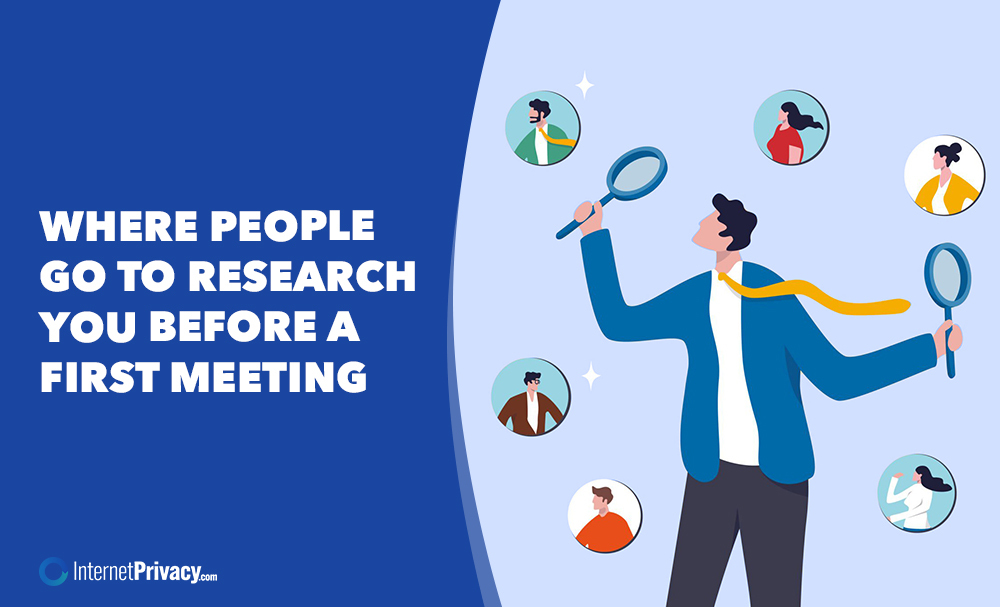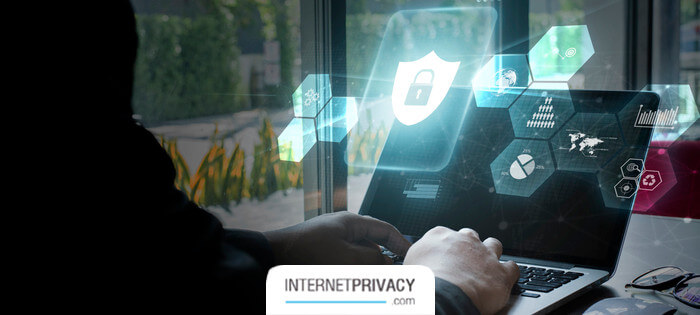Where People Go to Research You Before a First Meeting

Before a first meeting—whether for business, dating, or networking—people often look you up online. This research is fast, simple, and usually free. It helps them collect data, confirm details, and form first impressions before you even arrive. Knowing where people go to investigate your background gives you a chance to manage what they see and influence the narrative.
Why People Research Others Before Meeting
The primary purposes are usually safety, preparation, and context. A quick search can:
- confirm your identity and role
- explain your professional background
- identify mutual connections
- highlight potential red flags
- provide insights into your interests and values
This systematic way of inquiry has become an essential step in social and professional interactions. It’s a practical application of everyday research methods, even if the person doing it isn’t an experienced researcher. This process helps individuals make informed decisions and tailor their approach to the meeting, ultimately improving communication and outcomes by addressing relevant research questions.
Common Places People Look
1. Search Engines
Google remains the starting point for most people. A person types your name into the search bar, and results pages show a mix of news articles, images, videos, and links to other websites.
This process is less about formal methodology and more about quick data collection. People scan organic search results for:
- professional information
- past media mentions
- old content you may have forgotten
- anything unusual or noteworthy
Search engines provide a broad overview but don’t always guarantee the validity or accuracy of the findings. Still, these results frame the first impression many people carry into a meeting, making it crucial to have a positive and professional online presence. This reflects the importance of accepted theories about online reputation and the practical application of new knowledge in digital identity management.
2. Social Media Platforms
Profiles on Facebook, Instagram, TikTok, Twitter (X), and others are frequently reviewed to analyze your online presence. Posts, photos, and interactions serve as examples of your personality, interests, and relationships.
Here, people look for descriptive data: what you share, who you connect with, and how you interact. The findings are interpreted in different ways:
- frequent posts may suggest openness and engagement
- strict privacy settings may suggest caution or privacy concerns
- controversial or inappropriate comments may raise red flags
Social media research is informal but powerful. It allows people to create a sense of your character, values, and everyday behavior, which can significantly influence their expectations and comfort level. This qualitative examination complements quantitative methods of data gathering, providing a fuller picture derived from observations and interactions.
3. Professional Networking Sites
LinkedIn is often used to evaluate career history. By reviewing your profile, people can determine your skills, qualifications, and connections.
This type of research involves more systematic analysis than scanning social media. The person conducting research may:
- review your career trajectory,
- evaluate your role within an organization
- analyze endorsements or recommendations
- identify shared networks
For business meetings, especially, this information helps others prepare better questions and set realistic expectations. It also provides a clearer understanding of your professional capabilities and achievements, which may lead to opportunities for collaboration, innovation, or technology-driven projects.
4. Company Websites
If you are tied to a business, the company site can reveal your role, responsibilities, and professional values. Even small details, such as a staff bio or project description, can explain how you work and what you contribute.
This is one of the more reliable sources because the information is created and controlled by your organization. However, it still raises privacy concerns: what you list publicly—phone numbers, emails, team roles—may be more than you want strangers to see. Therefore, it’s important to carefully consider what you or your company makes available online. This controlled dissemination of information supports the practical application of research principles to protect privacy while sharing relevant knowledge.
5. Mutual Connections
People often check with colleagues, friends, or shared contacts. This qualitative method adds human interpretation to the data they’ve collected online.
Mutual connections can:
- confirm whether online findings are accurate,
- provide insights into your character and work ethic, and
- support or challenge assumptions formed through search results.
This kind of informal data collection shapes impressions in a way that algorithms cannot. It adds depth and nuance that purely digital research might miss, involving participants who contribute to the discovery and validation of information.
What They Learn from Research
The information gathered through these methods usually falls into a few categories:
- Background information: relationship status, history, or personal details.
- Professional experience: career path, skills, and achievements.
- Interests and hobbies: shared activities that create conversation starters.
- Social networks: connections that reveal credibility or trust.
While the findings may not always be completely valid or accurate, they often guide how people approach you. This research can influence their level of trust, openness, and engagement during your first meeting. It involves examining and interpreting data to form hypotheses about your character and suitability for collaboration or connection.
Privacy and Control: Taking Charge of Your Digital Footprint
You cannot stop people from researching you online, but you can take active steps to control what they find and how you are perceived. Managing your digital footprint is essential for protecting your privacy and maintaining a professional image.
Key strategies include:
- Regularly reviewing your search results to identify and address outdated or inaccurate information.
- Adjusting privacy settings on social media platforms to limit access to personal content while still sharing what supports your goals.
- Removing or updating outdated content that no longer represents you or your values.
- Creating and maintaining professional profiles (such as LinkedIn) that present accurate, reliable, and up-to-date information.
- Being mindful of what you post and share online, recognizing that everything contributes to your online reputation.
By proactively managing your online presence, you ensure that the research conducted about you reflects your best judgment and professional identity, rather than outdated data or unreliable sources. This control not only protects your privacy but also enhances the validity and accuracy of the information others use to form their impressions. These actions are examples of applying accepted theories and revised theories about digital identity management and privacy.
Final Takeaway
Research before first meetings is a widespread and practical process. People explore search engines, social media, professional sites, company pages, and mutual connections to collect data and form conclusions.
Understanding where they look and what they might find allows you to prepare systematically and strategically. By thoughtfully managing your online presence, you ensure that the version of you displayed to the world is accurate, reliable, and aligned with your personal and professional goals.
In essence, this pre-meeting research illustrates how everyday investigation and data collection shape social and business interactions, highlighting the importance of maintaining a consistent, positive digital identity. It also illustrates how science and technology influence modern communication and relationship-building, leading to better understanding and innovation in human connections.





